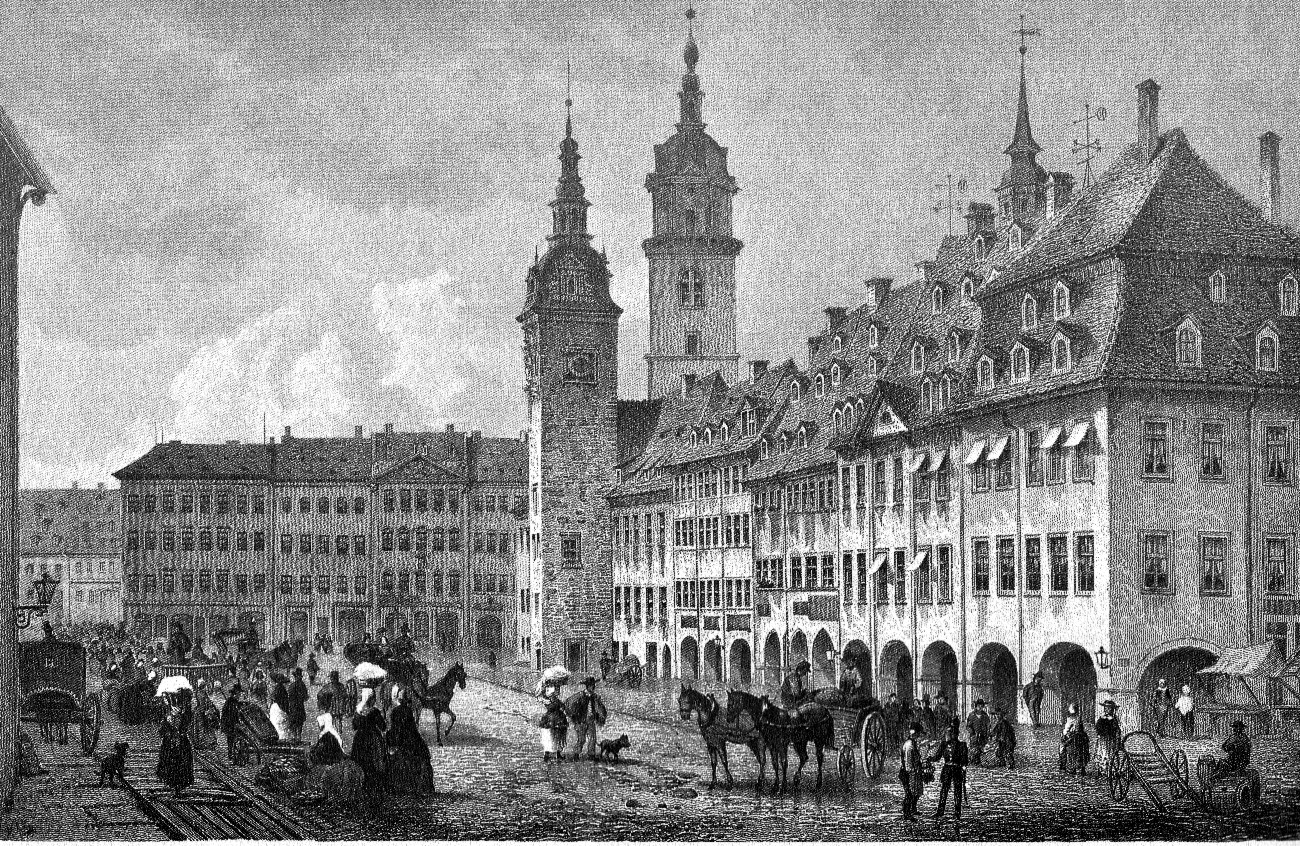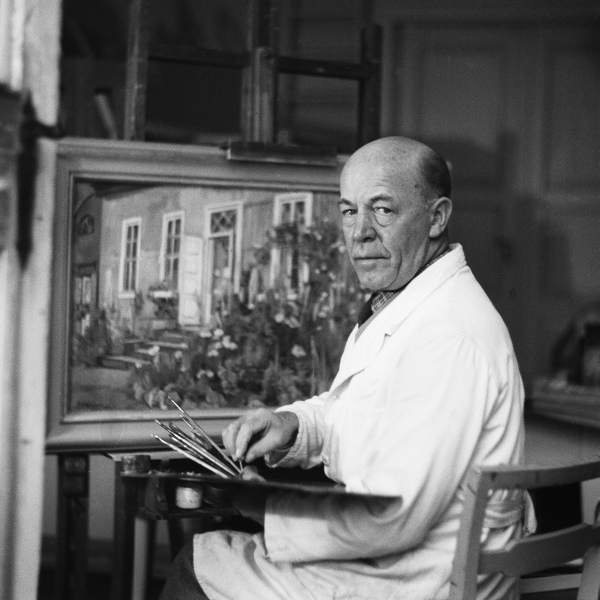|
Bruno Dürigen
Eduard Bruno Dürigen (1 February 1853 – 12 February 1930) was a German science popularizer, teacher, animal keeper, herpetologist, and poultry breed specialist. Dürigen was born in Erdmannsdorf (now part of Augustusburg) near Chemnitz in Saxony to Wilhelm Eduard (born 1817), a master saddler and pigeon fancier from Oberlichtenau who had purchased a home in 848 and married Clara Auguste Thieme in 1849. While just eleven, the young Dürigen kept pigeons and took an interest in other birds as well. He trained in Zschopau as a teacher and was appointed in the Erzgebirge area and then to Dresden where he met Anton Reichenow. In 1874 he taught at a grammar school in Berlin-Steglitz and at the same time attended classes in botany and zoology at Berlin University. Along with Karl Ruß Karl Friedrich Otto Ruß (January 14, 1833, Baldenburg – September 29, 1899, Berlin) was a Prussian pharmacist, aviculturist, author of bird-keeping books, and the founding editor of the world's fir ... [...More Info...] [...Related Items...] OR: [Wikipedia] [Google] [Baidu] |
Augustusburg
Augustusburg () is a town in the district of Mittelsachsen, in Saxony, Germany. It is situated 12 km east of Chemnitz. Augustusburg is known for its ''Jagdschloss'', the hunting lodge of the same name. The town includes the ortsteil or town quarters of: * Augustusburg * Erdmannsdorf * Grünberg * Hennersdorf * Kunnersdorf A funicular railway, the Augustusburg Cable Railway, connects Erdmannsdorf-Augustusburg station, in the village of Erdmannsdorf and on the Zschopau Valley Railway, with the town. Geography Location Augustusburg is located in the Ore Mountains (Erzgebirge), approx. 15 km east of Chemnitz, 5 km south east of Flöha, 20 km south west of Freiberg and 9 km north of Zschopau in the district of Mittelsachsen. Situation Augustusburg is situated on a ridge between the valleys Zschopau and the Flöha Flöha () is a town in the district of Mittelsachsen, in Saxony, Germany. Flöha is situated on the confluence of the rivers Zscho ... [...More Info...] [...Related Items...] OR: [Wikipedia] [Google] [Baidu] |
Chemnitz
Chemnitz (; from 1953 to 1990: Karl-Marx-Stadt , ) is the third-largest city in the German state of Saxony after Leipzig and Dresden. It is the 28th largest city of Germany as well as the fourth largest city in the area of former East Germany after (East) Berlin, Leipzig and Dresden. The city is part of the Central German Metropolitan Region, and lies in the middle of a string of cities sitting in the densely populated northern foreland of the Elster and Ore Mountains, stretching from Plauen in the southwest via Zwickau, Chemnitz and Freiberg to Dresden in the northeast. Located in the Ore Mountain Basin, the city is surrounded by the Ore Mountains to the south and the Central Saxon Hill Country to the north. The city stands on the Chemnitz River (progression: ), which is formed through the confluence of the rivers Zwönitz and Würschnitz in the borough of Altchemnitz. The name of the city as well as the names of the rivers are of Slavic origin. Chemnitz is the third larg ... [...More Info...] [...Related Items...] OR: [Wikipedia] [Google] [Baidu] |
Oberlichtenau
Oberlichtenau is a village and a former municipality in the district of Bautzen, in Saxony. Since 1 January 2009, it is part of the town Pulsnitz. History General history The Population was 1425 by 2008 and 1588 by 2000, in accordance with entry in the history list of Saxony; 2008 according to the statistical State Agency. As the Pulsnitz was border between Saxony and Germany until the beginning of the 19th century, also top and Niederlichtenau shared in a meißnisch Saxon and upper lausitzisch Bohemian part. A part of the town Pulsnitz became Oberlichtenau independent municipality on 1 January 2009. The Schloss Oberlichtenau In the 1718, the count Christian Gottlieb von Holzendorff had inherited the Manor of Oberlichtenau and thus the land for Schloss Oberlichtenau. In order to promote to his heritage, he needed an elegant accommodation befitting of his status in life. This was why in 1724 he had a baroque palace, in both the English and French style, and an English and Fr ... [...More Info...] [...Related Items...] OR: [Wikipedia] [Google] [Baidu] |
Zschopau
Zschopau (), is a town in the Erzgebirgskreis district of Saxony, Germany. Geography The town is located on the northwestern slopes of the Ore Mountains, on both Bank (geography), banks of the Zschopau (river), Zschopau River, about south-east from Chemnitz. The highest point is Mt. Pilzhübel with an elevation of . The municipal area comprises the village of Krumhermersdorf, incorporated in 1999. Since German reunification, Zschopau has lost about one fourth of its population. Zschopau is famous for its motorcycle industry, particularly the DKW and MZ Motorrad- und Zweiradwerk GmbH brands, and the toy business VEB Plasticart. Zschopau has a handsome parish church dedicated to St Martin, a town hall and a Wildeck Castle, castle (Schloss Wildeck), whose construction started in the twelfth century. Historical population Notable people * Heinz Auerswald (1891-1974), painter not to be confused with Heinz Auerswald German lawyer, Nazi party, 1908 - 1970 * Marcus Burghardt (born ... [...More Info...] [...Related Items...] OR: [Wikipedia] [Google] [Baidu] |
Anton Reichenow
Anton Reichenow (1 August 1847 in Charlottenburg – 6 July 1941 in Hamburg) was a German ornithologist and herpetologist. Reichenow was the son-in-law of Jean Cabanis, and worked at the Natural History Museum of Berlin from 1874 to 1921. He was an expert on African birds, making a collecting expedition to West Africa in 1872 and 1873, and writing ''Die Vögel Afrikas'' (1900–05). He was also an expert on parrots, describing all species then known in his book ''Vogelbilder aus Fernen Zonen: Abbildungen und Beschreibungen der Papageien'' (illustrated by Gustav Mützel, 1839–1893). He also wrote ''Die Vögel der Bismarckinseln'' (1899). He was editor of the ''Journal für Ornithologie'' from 1894 to 1921. A number of birds are named after him, including Reichenow's woodpecker and Reichenow's firefinch. His son Eduard Reichenow was a famous protozoologist. Reichenow is known for his classification of birds into six groups, described as "shortwings, swimmers, stiltbirds, skinb ... [...More Info...] [...Related Items...] OR: [Wikipedia] [Google] [Baidu] |
Karl Ruß
Karl Friedrich Otto Ruß (January 14, 1833, Baldenburg – September 29, 1899, Berlin) was a Prussian pharmacist, aviculturist, author of bird-keeping books, and the founding editor of the world's first bird-fancier magazine ''Die Gefiederte Welt''. Along with Bruno Dürigen, he also founded the magazine ''Isis'' in 1876. He sometimes wrote under the pseudonym Berthold Schwarz. He was among the few who managed to breed the now extinct Carolina parakeets in captivity. Biography Russ was born in a family of pharmacists and assuming that he would follow the family tradition, he studied pharmacy and passed the test for apothecaries in Berlin in 1862. He received a doctorate from Rostock University in 1866 and worked briefly as a pharmacist but was forced to give up due to a laryngeal problem. He had been interested in ornithology from a young age and wished to make knowledge more widely available and had been especially influenced by the work of Emil Adolf Rossmässler. In 1859 h ... [...More Info...] [...Related Items...] OR: [Wikipedia] [Google] [Baidu] |
1853 Births
Events January–March * January 6 – Florida Governor Thomas Brown signs legislation that provides public support for the new East Florida Seminary, leading to the establishment of the University of Florida. * January 8 – Taiping Rebellion: Zeng Guofan is ordered to assist the governor of Hunan in organising a militia force to search for local bandits. * January 12 – Taiping Rebellion: The Taiping army occupies Wuchang. * January 19 – Giuseppe Verdi's opera ''Il Trovatore'' premieres in performance at Teatro Apollo in Rome. * February 10 – Taiping Rebellion: Taiping forces assemble at Hanyang, Hankou, and Wuchang, for the march on Nanjing. * February 12 – The city of Puerto Montt is founded in the Reloncaví Sound, Chile. * February 22 – Washington University in St. Louis is founded as Eliot Seminary. * March – The clothing company Levi Strauss & Co. is founded in the United States. * March 4 – Inauguration of Franklin Pierce as 14th President of the ... [...More Info...] [...Related Items...] OR: [Wikipedia] [Google] [Baidu] |
1930 Deaths
Year 193 ( CXCIII) was a common year starting on Monday (link will display the full calendar) of the Julian calendar. At the time, it was known as the Year of the Consulship of Sosius and Ericius (or, less frequently, year 946 ''Ab urbe condita''). The denomination 193 for this year has been used since the early medieval period, when the Anno Domini calendar era became the prevalent method in Europe for naming years. Events By place Roman Empire * January 1 – Year of the Five Emperors: The Roman Senate chooses Publius Helvius Pertinax, against his will, to succeed the late Commodus as Emperor. Pertinax is forced to reorganize the handling of finances, which were wrecked under Commodus, to reestablish discipline in the Roman army, and to suspend the food programs established by Trajan, provoking the ire of the Praetorian Guard. * March 28 – Pertinax is assassinated by members of the Praetorian Guard, who storm the imperial palace. The Empire is auctioned of ... [...More Info...] [...Related Items...] OR: [Wikipedia] [Google] [Baidu] |





